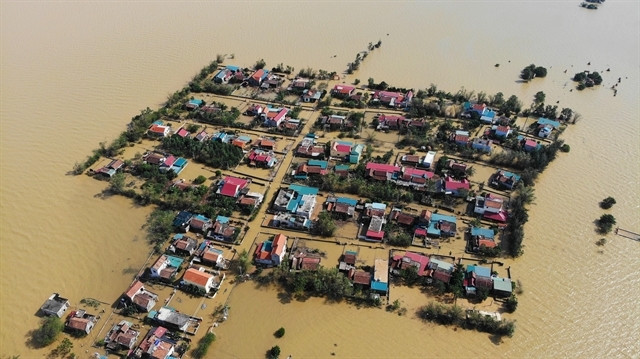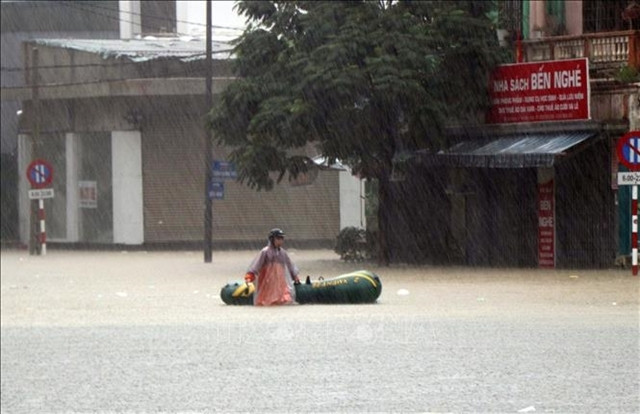 |
| Historic flooding in 2020 isolated many areas in the central province of Quảng Bình. VNA/VNS Photo |
The National Centre for Hydro-Meteorological Forecasting predicted that natural disasters in 2024 will be highly complex, with more frequent and stronger storms and the potential reoccurrence of the historic flooding scenario of 2020.
The centre attributed the increase in weather extremes to the transition of the ENSO phenomenon combined with climate change.
Due to the shift from El Nino to neutral and then to La Nina, it is expected that from now until August, the East Sea (internationally known as the South China Sea) might experience about 3-5 storms and tropical depressions, with approximately one making landfall. This number is lower than the multi-year average of 5-6 storms, with two affecting the mainland.
Towards the end of the year, La Nina could lead to heavy rains and major storms. From September to November, around seven to nine storms and tropical depressions are expected in the East Sea, with approximately three to four making landfall. This is higher than the usual annual average of six or seven storms, with two or three hitting the mainland.
The centre also noted that this year's storm season could see storms with complex trajectories and intensities. Particularly, La Nina's impact in the latter half of 2024 may result in heavy, concentrated rains in central Việt Nam, potentially repeating the historic flooding of 2020.
It indicated that in September, the total rainfall in the central region from Thanh Hóa to Thừa Thiên Huế will be 10-30 per cent higher than the multi-year average.
In October, total rainfall in the central region is expected to be 20-40 per cent higher than the multi-year average.
 |
| Heavy rains submerged many roads in the central province of Thừa Thiên-Huế in November, 2023. VNA/VNS Photo Đỗ Trưởng |
Mai Văn Khiêm, director of the centre noted that current weather patterns are similar to years of extreme and unusual natural disasters, most recently in 2020.
Specifically, storms and tropical depressions are expected to be more frequent in the latter half of the season, particularly affecting the central region. Consequently, there is a significant need for caution, as the possibility of large, concentrated rainfall in the central region, especially during September, October and November, cannot be ruled out.
In contrast, 2023 saw the influence of El Nino, characterised by fewer storms and rainfall. The country experienced eight storms and tropical depressions, lower than the multi-year average. Notably, no storms made landfall in Việt Nam in 2023.
Hoàng Đức Cường, deputy director of the General Department of Meteorology and Hydrology under the Ministry of Natural Resources and Environment indicated that four significant high tide events are forecasted for the southeast coast during the periods of September 18-23, October 16-22, November 12-20 and December 12-18.
During the high tides on October 16-22 and November 12-20, water levels at Vũng Tàu reservoirs may exceed 4.3 metres, posing risks of flooding in low-lying areas and regions outside the protective dykes, especially if these tides coincide with strong seasonal winds.
Between July and August 2024, the southwestern coastal provinces might experience one or two unusual tidal surges with large waves causing sea erosion, particularly in the Trần Văn Thời district in Cà Mau Province.
Under the La Nina weather condition, the rainy season in the northern region is likely to follow the typical climatic pattern, while in the Central Highlands and southern regions, it may start later than usual. Heavy rainfall is expected from July to September in the northern region and from September to November in the central region.
However, intense localised rainfall of 50-100mm in over three to six hours may frequently occur, posing risks of landslides and flash floods in mountainous areas and urban flooding. — VNS